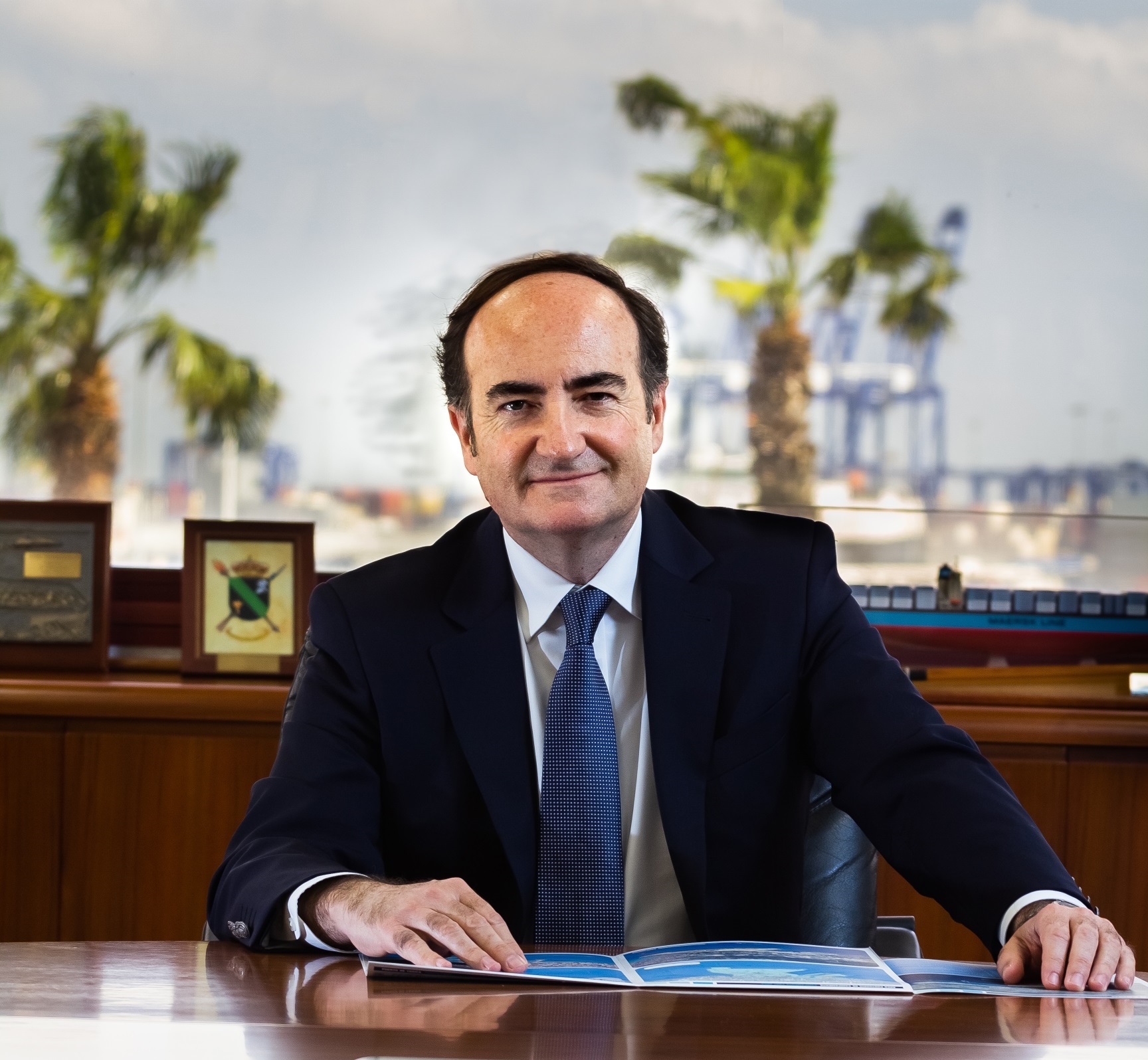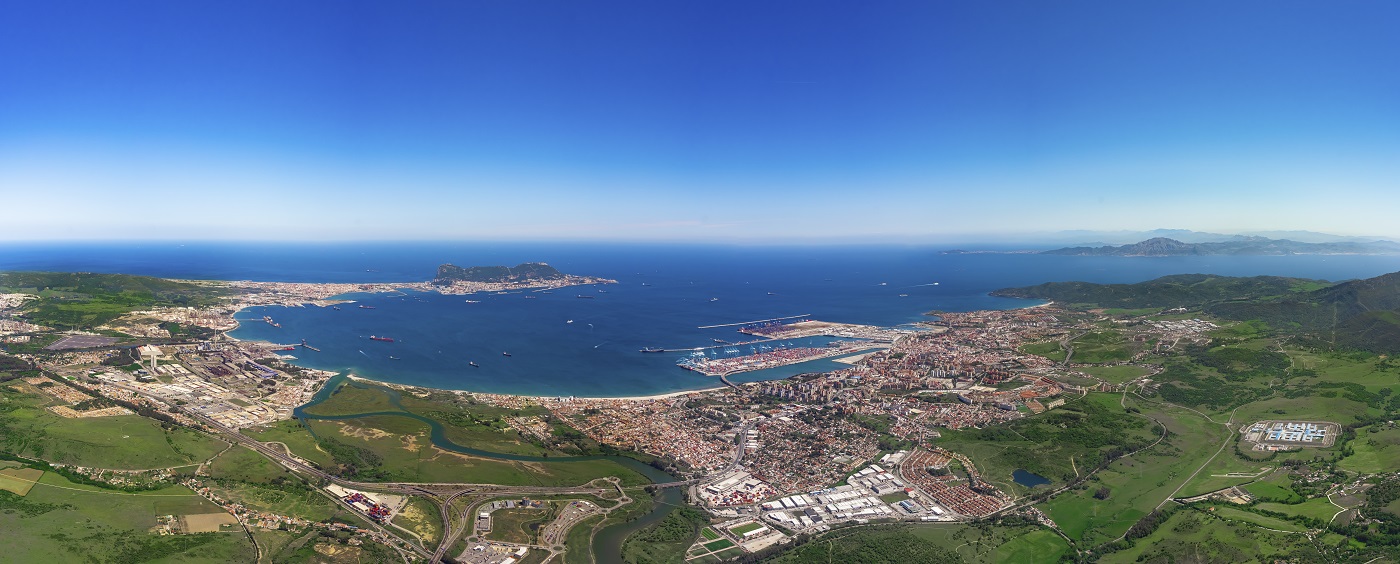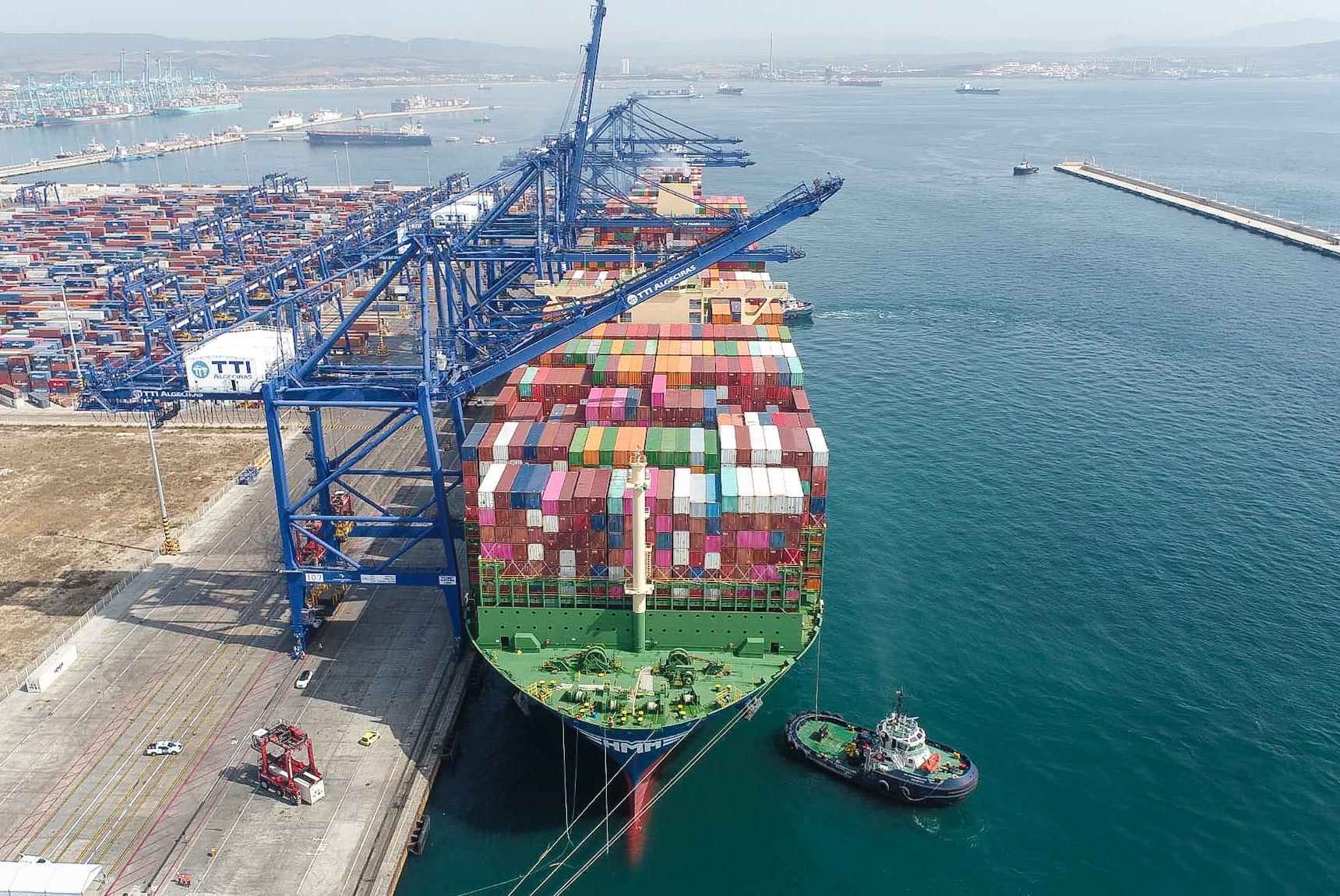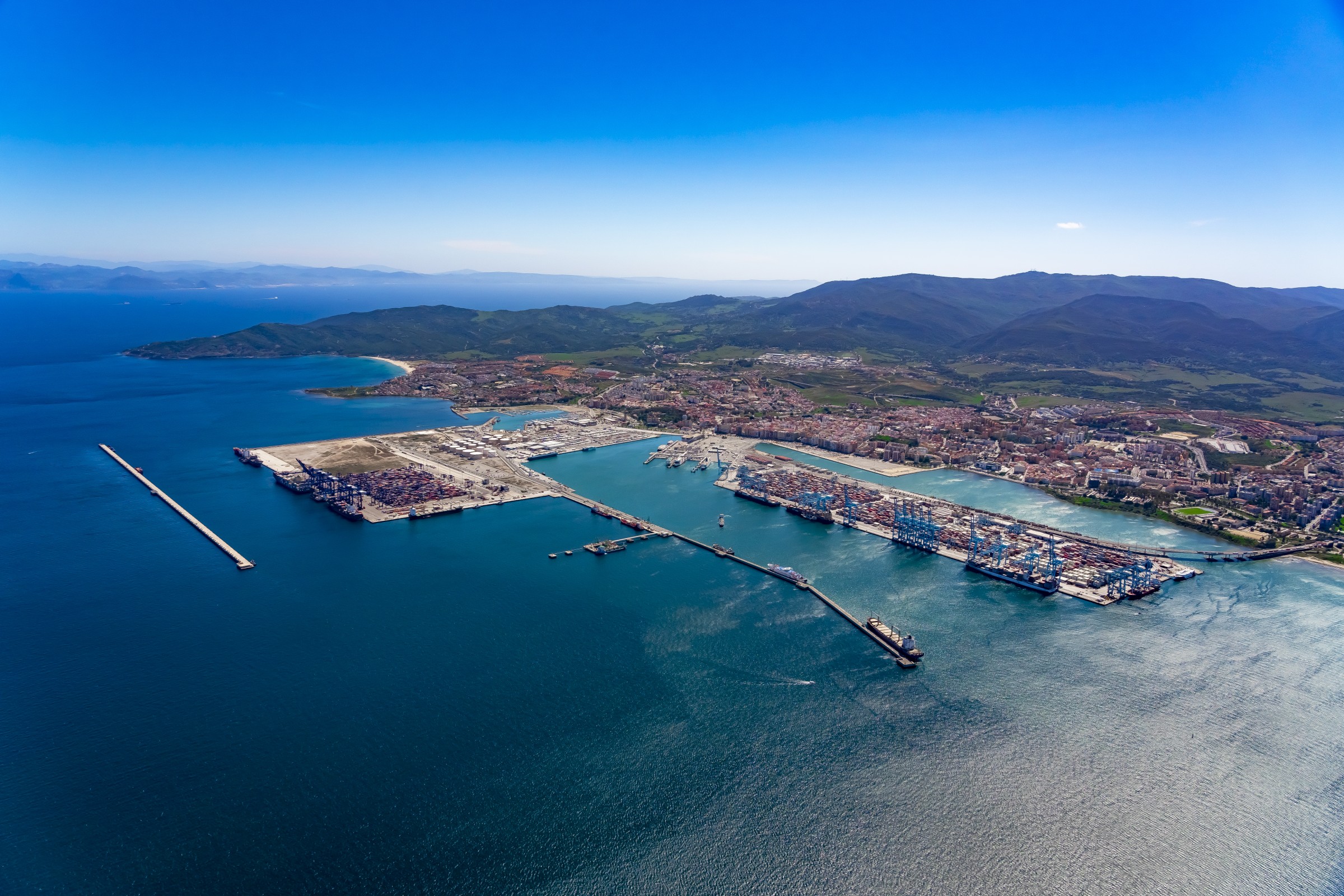31 August 2021
This month ESPO is taking you to the very south of Spain for an interview with Mr Gerardo Landaluce, Chairman of the Port of Algeciras. Learn more in what follows about his long term vision for the port, how he got into maritime transport, and his takes on a number of interesting topics.

Can you briefly tell us about the Port of Algeciras? What are its main characteristics and challenges?
The strategic location of the Port of Algeciras at the Strait of Gibraltar, the excellent natural conditions of the Algeciras bay and its advanced port facilities, together with the efforts and skills of our Port Community are key factors that have allowed us to consolidate our position among the top European commercial ports, by exceeding the record figure of 100 million tons total throughput.
A sustained leadership is only built upon the offer of a wide and competitive range of services, as well as on three strategic axes: Competitiveness, Sustainable Development and Innovation. In this sense, our challenge is to meet, among other milestones, the needs and requirements achieved on a regular year with almost 29.000 ship calls, more that 6.1 million passengers and 1.2 million vehicles – more than 300,000 of which are HGVs – that make the Port of Algeciras Bay the maritime bridge between Europe and Africa.
What is your vision for the Port of Algeciras for the next decade? What are the main investment projects in the coming years?
Our aim is to lead a competitive and sustainable port and logistics offer which creates added value, in close cooperation with customers, and contributing to the benefit of the regional economy and employment. Taking into account that around 30.000 jobs are directly or indirectly related to the port and logistics activity and considering the high ratio of unemployment of the Campo de Gibraltar area, meeting these goals is somehow a must.
The Port of Algeciras looks to the future with its eyes set on its great potential to continue growing and serving new customers and traffics. Consequently, we support the expansion of container activity towards the Phase B of Isla Verde Exterior. Our -18.5 m quay draft allows APM Terminals Algeciras and Total Terminal International Algeciras to render service to the biggest vessels on the intercontinental trades, like the HMM ALGECIRAS Class of 24,000 TEU capacity.
Being a hub port allow us to reach a world direct connectivity with more than 200 ports from 75 countries through 150 regular services operated by 30 shipping lines. Consequently and thanks to the privileged transit time we can offer to our customers, the export/import traffics are growing steadily.
Continuing consolidating Algeciras as a strategic maritime and logistics bridge between the two continents, Europe and Africa, is another strategic objective. In this scenario, we have designed the “Hercules Plan”, consisting of a set of initiatives in order to continue developing ro-ro traffic as a support to growing sectors, such as the automotive one.
Developing business in line with sustainable development is also another main objective. Thus, we are promoting the “Maritime Lake Project”, which involves the urban and environmental transformation of the coastal strip where the port and the city of Algeciras meet. Its goal is to meet the historical demand to recover the transition spaces between the port and the city for citizen use, following criteria of sustainability, innovation, integration and qualification of spaces and uses.

The Port of Algeciras is a leading port in Europe when it comes to the handling of containerised cargo. What has been the impact of the COVID-19 crisis on container traffic in the port? What is needed for an effective recovery from the COVID-19 crisis?
In terms of containerised cargo movement, COVID-19 had no real big impact in terms of total figures (-0.34%).
On the other hand, it has highlighted, like in other European ports, the excellent behaviour of our port communities, ensuring the service in very hard and difficult times. I believe that the key role of ports and port and logistics communities during the pandemic has not been sufficiently recognised.
Regarding recovery, investing in connectivity is always investing in competitiveness. Advancing in the execution of the TEN-T should be a priority more than ever. It is also very important to learn the lessons from the pandemic regarding the strategic need for the EU to control its own logistics.
Due to its location, the Port of Algeciras also needs to compete with non-EU ports. What are the main areas of competition with non-EU ports? What is needed to preserve the competitive position of the Port of Algeciras?
The Strait of Gibraltar is a strategic space for global maritime connectivity and logistics. Therefore you compete, but it is also an environment of collaboration and complementarity for certain traffics. It is like a prism that has different faces according to the traffic we consider.
Our experienced container terminals have a solid base to face competition. Thus, the last Container Port Performance Index (CPPI), promoted by the World Bank and IHS Markit, has placed the port of Algeciras among the ten most productive ports worldwide. World maritime port connectivity is one of our great assets too since, it is among the top-25 according to the UNCTAD.
At the same time we have to face different tax and customs systems, which are more attractive than the European one. Therefore, in order to optimise the possibilities to face the real initiatives of third countries state projects, Spain and the EU must be conscious of the great economic, social and political challenges and opportunities that represents the Strait of Gibraltar to promote solid economic relations with the North of Africa and even with Gibraltar itself after Brexit.
In this sense, it is very important to maintain an environment of free competition. Initiatives such as the Emission Trade System can be a dangerous competition-distorting factor in this context.
The Port of Algeciras is a primary hub on both the Mediterranean and Atlantic Core Networks of the Trans-European Transport Network (TEN-T). How did the port benefit of being part of both these Core Networks?
Just a few European ports are integrated into two Core Network corridors. That is a clear indication of the current and future key role of Algeciras and the Andalusia region for the European and intercontinental logistics chains. However, we have been suffering from the “no man’s land syndrome” lately. We expect this situation to change in the near future and the necessary and committed railway investments will soon be a reality.
To get the goods to the desired destination, a good access between the port and the hinterland is needed. Could you briefly tell us how the port is connected with the hinterland? Can this be further improved?
Incomprehensibly, the great potential of maritime connectivity and competitive transit time is partially diluted on the land side. Even though we have good railway figures (in the first half of the year, 426 trains have been operated), a poor rail infrastructure is still our “Achilles’ heel”.
Consequently, our main connection with the hinterland is by road. However, considering the large volumes of ro-ro traffic that Algeciras Port experiences, its growth forecasts and the need to reduce CO2 emissions, we have a lot of hopein projects associated with the rolling motorways (ferroutage).

The ferry business plays an important role in the Port of Algeciras. What has been the impact of the COVID-19 crisis on the ferry business in your port? Are you already witnessing a recovery? What is needed to further enable the effective recovery of ferry business?
As per passenger traffic, in contrast to cargo traffic, the more than 6.1 million passengers we attend in a regular year has been strongly affected by the closure of borders with Morocco (-74.67%), but we hope to overcome the present pandemic in a prudential period of time. In this sense, the sector, and particularly ferry lines, have been heavily affected from a labour and economic point of view.
The digital transition of Europe’s economy and society is a priority of the EU. What can be the role of a port managing body in digitalising the port and the broader logistics chain? Is the Port of Algeciras ready for the digital transition?
Our digital strategy is focused on making real the concept of Algeciras Next Generation Port -intelligent, synchromodal and green – and on strengthening our role of Port Ecosystem Orchestrator, as Port Authority.
A port is a very complex and dynamic business ecosystem, where many parties are involved to accelerate the cargo flow and provide associated logistics services. We, as Algeciras Port Authority, truly believe in our mission to “Facilitate the Port’s Business” and with this aim, we are building a Digital Platform to Orchestrate the Port Ecosystem from a holistic perspective. This Technology Platform is based on the Digital Control Tower concept and its purpose is to help to coordinate and synchronise all actors involved to reduce waste, which has significant consequences on efficiency, reliability and green port activities.
Actually, the Digital Platform for Port Orchestration is a “Platform of Platforms” working together in a coordinated way.
Last year, the Port of Algeciras received the ESPO Award 2020 in recognition of its successful strategy to attract innovation and local start-ups. What is the added value of the Port of Algeciras to the city and local community? Is the Port of Algeciras still conducting projects to reinforce its relationship with the city and local community?
We are very thankful for having been recognised with the ESPO Award 2020. It has motivated our whole team to continue working this way.
As Peter Drucker said, “Culture eats strategy for breakfast”. So, we have designed our Innovation Journey as a group of different initiatives to consolidate an open innovation culture, where we encourage collaboration between internal and external parties to face business challenges together.
We are considering innovation as a key business process, and we have two goals in mind: first, consolidating an innovation hub, specialised in logistics and secondly, making real the concept of Algeciras Next Generation Port.
In practice, we are working on a group of initiatives with a very comprehensive and global perspective. And last, but not least, we use our Algeciras Port Living Lab, where we share our physical and digital assets with start-ups to co-create, test and demonstrate innovative solutions in a real operational environment: Algeciras Port.

How do you view the Commission’s intention to include maritime in the EU emission trading system (EU ETS)? From a port’s point of view, what should be considered in such a maritime ETS?
Algeciras Port welcomes and supports the European Green Deal and its aims, contributing to reducing the emissions in the maritime sector gradually. Nevertheless, we consider that the transhipment activity in European ports can be strongly and negatively impacted if these measures are not introduced with caution and common sense.
It could distort the international market, changing the current European supply chain and therefore it may not be as efficient reducing emissions as thought, but transferring logistics activity to surrounding ports in order to avoid the levy impose by the EU ETS.
If a price per ton of emitted CO2 is charged (not long ago it was $50/ton), it is highly likely that in order to pay for fewer CO2 emissions, instead of bringing cargo directly from third party ports to EEA ports and vice versa, it would be brought through other intermediate ports close to Europe, i.e. post-Brexit British ports or North African ports.
In other words, cargo may still be delivered to European markets by sea from ports close to Europe (third countries). However, the European ports (particularly south European hub ports) will lose competitiveness and consequently most of their transshipment activity. If this happens, the immediate consequence is that the European Union will lose control of its supply chain too. Whoever controls the port transshipment activity will control the supply chain for import and export cargo. One of the key roles of EU ports is to guarantee a reliable supply chain of foreign trade in the EU economic interests.
In short, Algeciras Port has manifested its backing of the European Green Deal and will actively contribute towards its implementation. In fact the port is actively promoting circular economy, investing in connecting the port to TEN-T intermodal corridors or speeding up the deployment of a new hydrogen plant within our port facilities.
Due to our port geographic location, our activity is bound to the world trade flows; we fully support global carbon reduction strategies promoted by the International Maritime Organization and would welcome a European initiative integrated and compatible that would not undermine IMO initiatives.
It would be a good approach to have a fund associated with the European ETS where carbon collected revenues would revert into the maritime sector, in terms of R&D, adoption of low carbon technologies, and subsidies to close alternative low carbon fuels price gap. Ports could also participate from this fund to promote investments in alternative fuels bunkering infrastructure.
Finally, we would like to express our concern about the negative impact of a regional measure on transhipment ports competitiveness with neighbouring ports of third countries and we offer our full collaboration to participate in further impact assessments or any other initiative to achieve a level playing field with the EU ETS implementation.
How did you get into maritime transport? How did your career path lead to this position?
Good question. I started my professional career in banking in the United States where I had good opportunities to get to know international markets, particularly in Latin America.
In 1996, the opportunity to join an organisation with great potential like the Port Authority of Algeciras Bay reached out to me, and the rest is history. From that date on, I have done my bit to give my best contribution to a great team and a great port community.
Ports can contribute a lot to the economic and labour development of our regions and consequently the whole European Union. That is why giving visibility to the activity of ports and their port communities as well as supporting ESPO's work is truly important.
Related documents
No attachments.
